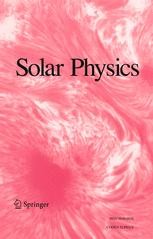Solar Physics: Topical Collection on “Combined Radio and Space-Based Solar Observations” completed
Developments and challenges discussed during CESRA 2016 workshop published
 We are happy to announce the publication of the completed Topical Collection on “Combined Radio and Space-Based Solar Observations: From Techniques to New Results” in the journal Solar Physics.
We are happy to announce the publication of the completed Topical Collection on “Combined Radio and Space-Based Solar Observations: From Techniques to New Results” in the journal Solar Physics.
The phenomena observed at the Sun have a variety of unique radio signatures that can be used to diagnose the processes in the solar atmosphere. The insights provided by radio observations are further enhanced when they are combined with observations from space-based telescopes. This Topical Collection of 15 articles demonstrates the power of combination methodology at work and provides new results on i) type I solar radio bursts and thermal emission to study active regions; ii) type II and IV bursts to better understand the structure of coronal mass ejections; and iii) non-thermal gyro-synchrotron and/or type III bursts to improve the characterisation of particle acceleration in solar flares. The ongoing improvements in time, frequency, and spatial resolutions of ground-based telescopes reveal new levels in the complexity of solar phenomena and pose new questions.
Please, read the recent Editorial by our guest editors:
Eduard P. Kontar and Alexander Nindos, Solar Physics (2018) 293: 90. https://doi.org/10.1007/s11207-018-1309-2
We take this opportunity to thank all authors, referees and guest editors who gave their time and expertise to create this special issue.
